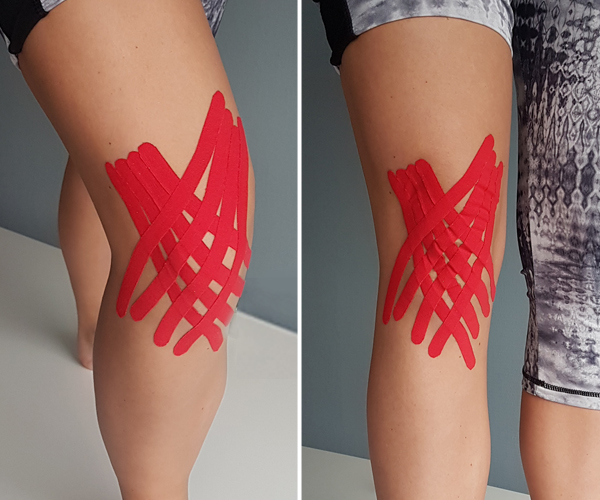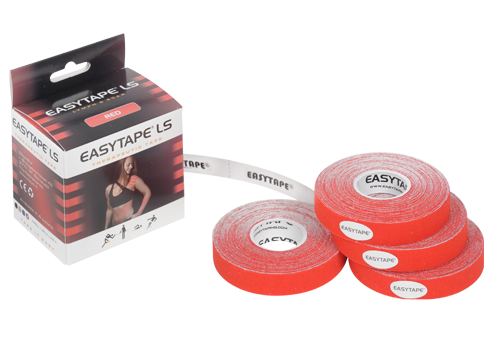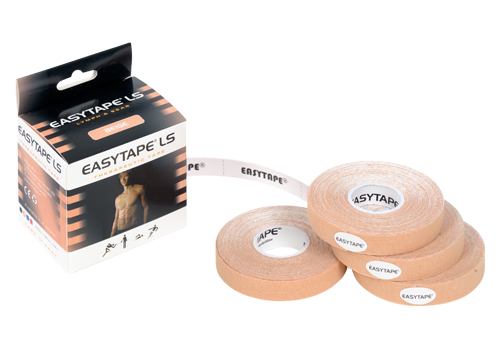
Knee effusion (edema) treatment with Easytape® Lymph & Scar tape
On this page we show how a knee effusion can be treated with with Easytape® Lymph & Scar tape. The tape supports the balance between the generation and removal of fluid in the lymphatic system. It supports safe, effective and pain-free lymphatic drainage and edema therapy.
What is effusion?
Knee effusion occurs when excess fluid accumulates in or around the knee. Because more fluid is supplied than discharged, edema can occur. Edema can be caused by an injury or blockage of the lymphatic vessels. We advise you to see a physiotherapist with. After the given treatment, Easytape® is used to optimize the effect of the treatment. Easytape® supports the balance between the generation and removal of fluid in the lymphatic system.The tape works 24 hours a day. The result are: less pain, less accumulation of fluid, decrease in size and less swelling!
Why does taping work?
A swollen, painful knee may indicate the presence of fluid in the knee joint. Overpressuring can be a possible cause of fluid retention in the knee. Some advise ice, but we DO NOT RECOMMEND USING ICE! In this article we explain why cooling with ice does NOT work and can actually increase problems. We do not recommend wearing a knee brace, because a knee brace does not promote circulation and counteracts it. Easytape® Lymph & Scar tape supports the balance between the production and removal of fluid in the lymphatic system. Supporting drainage results in a faster recovery. Below we explain the effect of tape on a knee effusion.

.
.
How to tape a knee effusion?
The trick on edema taping is to apply the tape when the body part is bended or stretched. When back in normal position, the elastic tape lifts the skin and supports lymphatic drainage. On the image above (left) the knee is slightly bent and on the right the knee is in normal position. You see that the tape lifts the skin. Moisture circulation is promoted and the moisture will be drained easier. We used 8 strips of tape with the length of 20 cm per strip and cut the ends round for optimal adhesion. Taping will have the most effect after a given treatment by a (physio)therapist.
Step 1: Tape with 0% stretch and fascial. Fascial means: when the skin is stretched or the joint is bended. When the body regains its normal position, the tape shrinks and lifts the skin, resulting in better drainage. Take a seated position and bend the knee. In this position, the skin of the knee is stretched. Apply the four stripes of tape on the knee, starting at the top towards the bottom.
Step 2: Place four more Easytape® strips parallel to each other with 0% stretch and fascial from the top of the knee to the bottom of the knee.
Step 3: Rub warm after applying to activate the adhesive so the tape will last the longest. Short-term itching (about 10 to 20 minutes) can occur when the tape is applied to the skin. This does not have to be a problem, because it can mean that the tape does its job properly: the circulation is supported. However, with persistant itching, irritation or burning sensations that lasts longer than half an hour, the tape must be removed. When removed it can leave red marks which means that the tape does its job properly: the circulation is supported. This will fade in a few minutes.




EASYTAPE® | ALL RIGHTS RESERVED | DISCLAIMER | PRIVACY POLICY
